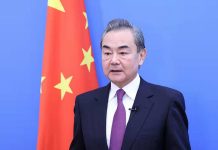BEIJING: The Build Back Better World (B3W) initiative launched by the U.S. and its allies at the Group of Seven (G7) Summit in Cornwall, Britain, in June has grabbed recent headlines. According to the White House, B3W is a values-driven, high-standard, and transparent global infrastructure development plan zooming in on four areas: climate, health and health security, digital technology, and gender equity and equality. Its alleged objective is to help narrow the over $40-trillion need for infrastructure in the developing world.
However, in the eyes of many international affairs commentators and analysts, the G7 plan is an alternative designed by the U.S. and its allies to counter the Belt and Road Initiative. This is not the first time the U.S. has initiated something like B3W. The Donald Trump administration introduced programs like Prosper Africa, Growth in the Americas, Asia EDGE (Enhancing Development and Growth Through Energy), Blue Dot Network, Economic Prosperity Network and Clean Network. Yet most of these achieved no substantive results. As the influence of the Belt and Road Initiative continues to grow, the U.S. is probably feeling more anxious. After finding its repeated criticisms, slanders even, against the initiative ineffective, it opted for a different approach—namely that of copying China’s work.
Once in office, the Joe Biden administration began planning an infrastructure development plan for “democracies” together with Britain, Japan, and other allies. The Council on Foreign Affairs, the Center for New American Security and other American think tanks released multiple reports advising on such a plan. Many scholars have pointed out that launching B3W exemplifies how the U.S. attempt to substitute and undermine the Belt and Road Initiative now enters a new phase of rallying support through values and collaboration with allies.
By pushing the G7 to agree on B3W, the U.S. is trying to drive close coordination between its transatlantic and Indo-Pacific alliances by forging an ideological bond. It is true that the U.S. has made some progress this time around in pooling domestic and external resources and leveraging the strengths of participating parties, but B3W is still miles away from actual implementation. Whether it will end up nowhere like previous U.S. programs remains to be seen. First, the B3W membership lacks cohesion. Though G7 countries have reached an agreement on the plan, they each have their own calculations and priorities. Most European countries refused to be part of an anti-China coalition designed by the U.S. At a press conference during the G7 Summit, French President Emanuel Macron said France would neither be a vassal of China nor absolutely align with the U.S. German Chancellor Angela Merkel said, “We will never achieve solutions without China.” Both leaders stressed the need to strengthen cooperation with China.
– The Daily Mail-Beijing Review News exchange item






